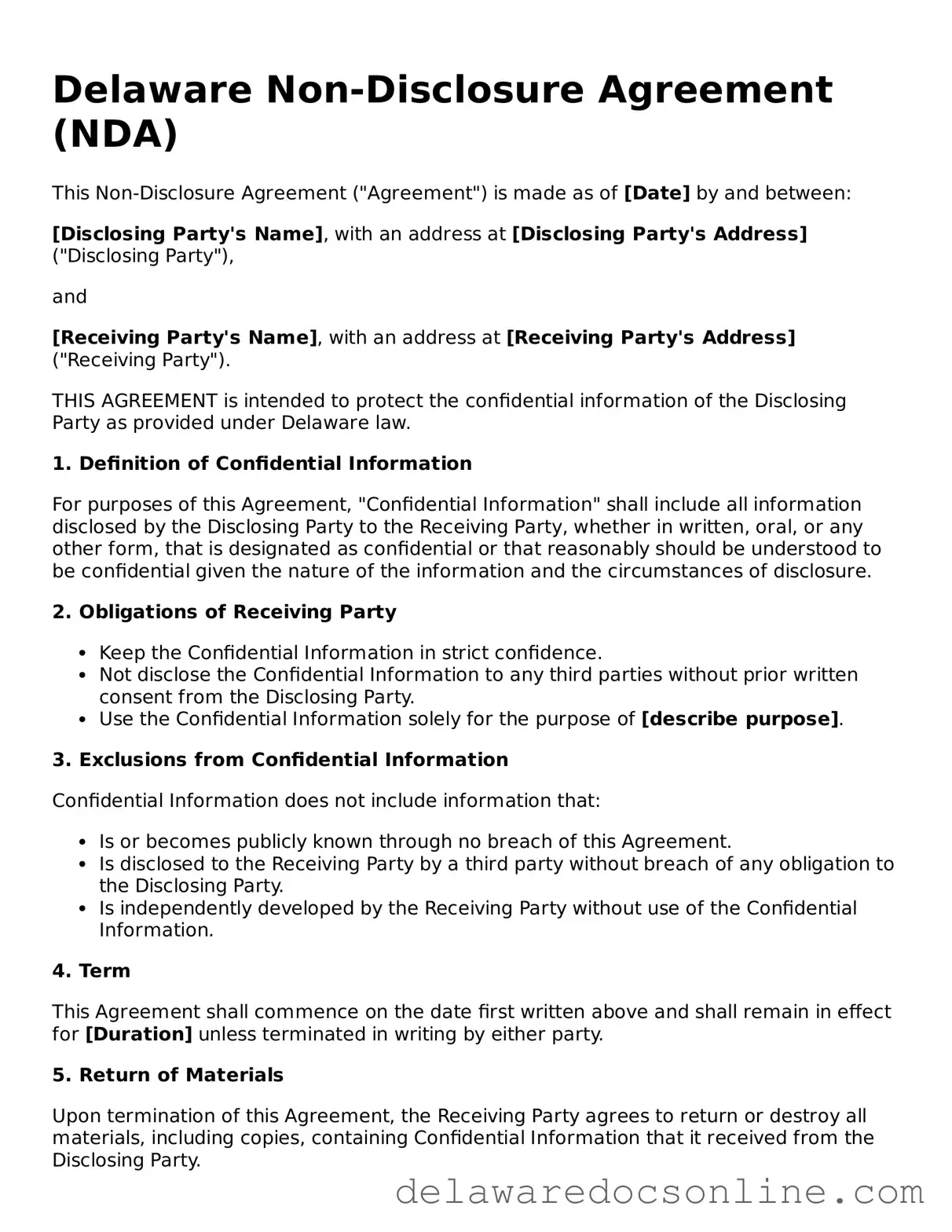Delaware Non-Disclosure Agreement (NDA)
This Non-Disclosure Agreement ("Agreement") is made as of [Date] by and between:
[Disclosing Party's Name], with an address at [Disclosing Party's Address] ("Disclosing Party"),
and
[Receiving Party's Name], with an address at [Receiving Party's Address] ("Receiving Party").
THIS AGREEMENT is intended to protect the confidential information of the Disclosing Party as provided under Delaware law.
1. Definition of Confidential Information
For purposes of this Agreement, "Confidential Information" shall include all information disclosed by the Disclosing Party to the Receiving Party, whether in written, oral, or any other form, that is designated as confidential or that reasonably should be understood to be confidential given the nature of the information and the circumstances of disclosure.
2. Obligations of Receiving Party
- Keep the Confidential Information in strict confidence.
- Not disclose the Confidential Information to any third parties without prior written consent from the Disclosing Party.
- Use the Confidential Information solely for the purpose of [describe purpose].
3. Exclusions from Confidential Information
Confidential Information does not include information that:
- Is or becomes publicly known through no breach of this Agreement.
- Is disclosed to the Receiving Party by a third party without breach of any obligation to the Disclosing Party.
- Is independently developed by the Receiving Party without use of the Confidential Information.
4. Term
This Agreement shall commence on the date first written above and shall remain in effect for [Duration] unless terminated in writing by either party.
5. Return of Materials
Upon termination of this Agreement, the Receiving Party agrees to return or destroy all materials, including copies, containing Confidential Information that it received from the Disclosing Party.
6. Governing Law
This Agreement shall be governed by and construed in accordance with the laws of the State of Delaware.
7. Miscellaneous
- This Agreement constitutes the entire agreement between the parties regarding the subject matter hereof and supersedes all prior agreements and understandings.
- This Agreement may be modified only by a written amendment signed by both parties.
- If any provision of this Agreement is held to be invalid or unenforceable, the remaining provisions shall continue in full force and effect.
IN WITNESS WHEREOF, the parties have executed this Non-Disclosure Agreement as of the date first above written.
Disclosing Party
By: _________________________
Name: [Disclosing Party Representative Name]
Title: [Disclosing Party Representative Title]
Receiving Party
By: _________________________
Name: [Receiving Party Representative Name]
Title: [Receiving Party Representative Title]
